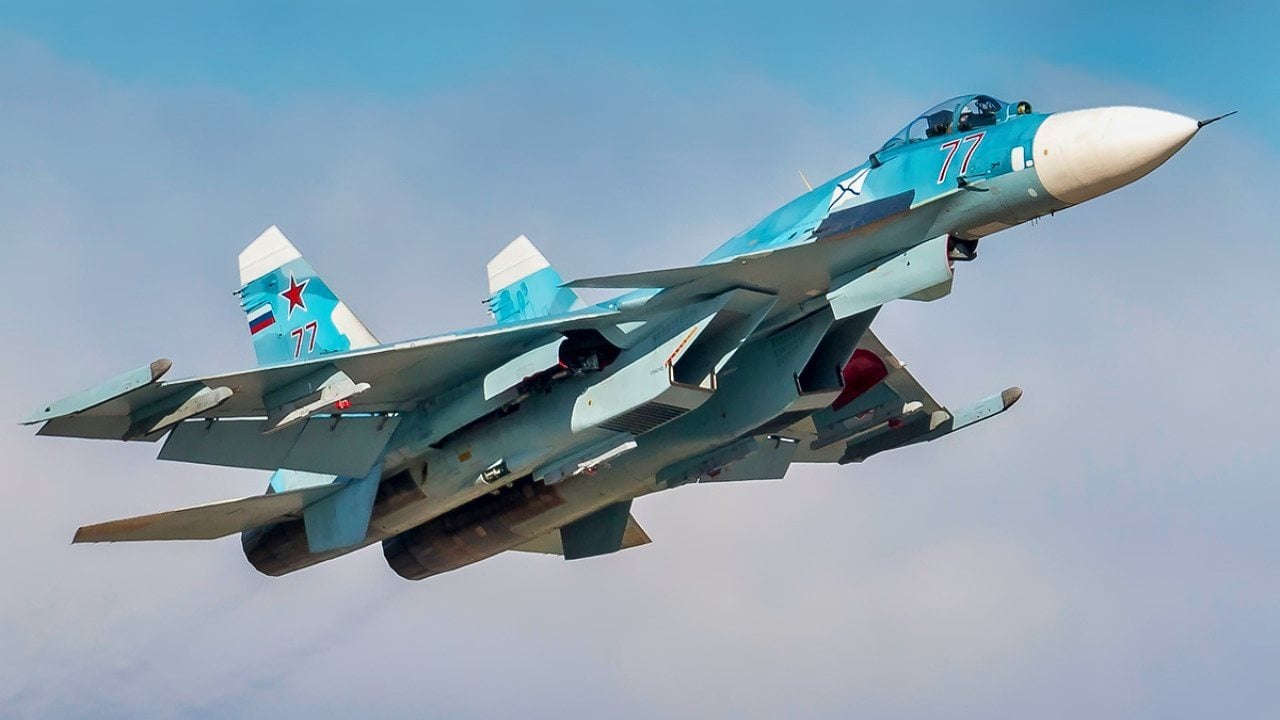Russia's Su-33 Aircraft Carrier Fighter Nightmare Is Embarrassing
Russia's quest to become an aircraft carrier power has been marred by failures, notably with the Su-33 fighter jet. Introduced in 1999, this carrier-based aircraft has struggled with numerous operational mishaps, including failed landings on the Admiral Kuznetsov, Russia's only carrier.
Summary: Russia's quest to become an aircraft carrier power has been marred by failures, notably with the Su-33 fighter jet. Introduced in 1999, this carrier-based aircraft has struggled with numerous operational mishaps, including failed landings on the Admiral Kuznetsov, Russia's only carrier.
-Despite being equipped with advanced armaments and designed for short runway capabilities, the Su-33 has been plagued by crashes and reliability issues, leading to its limited use in combat scenarios, such as in Syria.
-With no international buyers, Russia faces a dilemma: continue trying to modernize the Su-33 or retire and scrap this problematic fleet.
The Su-33 Debacle: Inside Russia's Failed Carrier-Based Fighter Jet
There was a time when the Russians were serious about trying to become an aircraft carrier power. Not only did Russian designers develop an aircraft carrier (the shambolic Admiral Kuznetsov, for example). They also created an equally disastrous carrier-based warplane. Known as the Su-33, this warbird has crashed, failed to land on Russia’s lone aircraft carrier (the task for which it was designed), and has generally caused chaos for the Russians.
Despite having been in service since 1999, the Su-33 has a vague and lackluster service record. Now, the Russians are trying to figure out if they should retire the decrepit warplane. Or if they should simply scrap the whole fleet and do their best to forget these nightmare birds.
Su-33 Specs
The Su-33, on paper, sounds like a decent warplane.
It can travel as fast as 1,430 miles per hour with a range of 1,860 miles. The Su-33 can reach a maximum altitude of 55,800 feet. It looks similar to the Su-27, but it is quite different. For starters, she possesses folding wings (meant to maximize space in the carrier hangar). The Su-33 can not only launch from and land on carriers at sea, but these warbirds are designed to land and takeoff from very short runways in contested environments.
The Su-33 was designed with a lethal armaments package. The bird comes with 30mm Gsh-30-1 cannons. As for missiles, the Su-33 can fire an assortment of weapons. Everything from R-27R1(ER1) missiles, R-27T1(ET1), and R-73E air-to-air missiles. S-8KOM, S-8OM, S-8BM S-13T, S-13OF and S-25-OFM-PU unguided missiles, Kh-25MP, Kh-31 and Kh-41 guided missiles, RBK-500 cluster bombs and electronic countermeasure pods.
It all sounds like a fairly conventional Russian warbird. So, what’s wrong with the Su-33?

For starters, all reports indicate that these birds cannot carry the armaments that they are designed to carry. Then there’s the basic fact that this bird is disaster-prone. Multiple crashes—including one at an airshow—has marred the Su-33’s existence almost from its beginning.
No One Wants This Bird
This bird is such a flying mess-heap that, after it crashed in a spectacular fashion while attempting to land on the flight deck of Russia’s sole aircraft carrier, the Admiral Kuznetsov, Russia’s military ceased all combat operations from the carrier. Instead, Russia’s air war against Bashar Assad’s enemies in the Syrian Civil War was based out of the Russian airbase at Latakia in Syria.
In fact, the Su-33 is such a joke of a warplane that, in June 2001, when an Su-33 crashed while trying to land on the Admiral Kuznetsov and ended up in the Atlantic Ocean, the Russian Navy opted against blowing the bird up. The reason was likely because the Russians determined that the Su-33 was such a piece of junk that it had no valuable systems onboard that could give Russia’s enemies any advantage over them if the bird was retrieved by the Americans or some other NATO member’s navy.
Rumors have persisted that the Russians have been trying to modernize this bird to make it a more competitive asset for sale on the global arms export market. Needless to say, after years of trying to export the Su-33, no country wants this hunky junk.
The Su-33 is yet another sad reminder of how much of a waste Moscow’s carrier obsession has been. Honestly, they’d be better off mothballing the carrier and scrapping the Su-33, forgetting that they ever tried to waste their time (and valuable resources) on competing with the Americans with carrier capabilities.
About the Author
Brandon J. Weichert, a National Interest national security analyst, is a former Congressional staffer and geopolitical analyst who is a contributor at The Washington Times, the Asia Times, and The-Pipeline. He is the author of Winning Space: How America Remains a Superpower, Biohacked: China’s Race to Control Life, and The Shadow War: Iran’s Quest for Supremacy. His next book, A Disaster of Our Own Making: How the West Lost Ukraine, is due October 22 from Encounter Books. Weichert can be followed via Twitter @WeTheBrandon.
Image Credit: Creative Commons.


